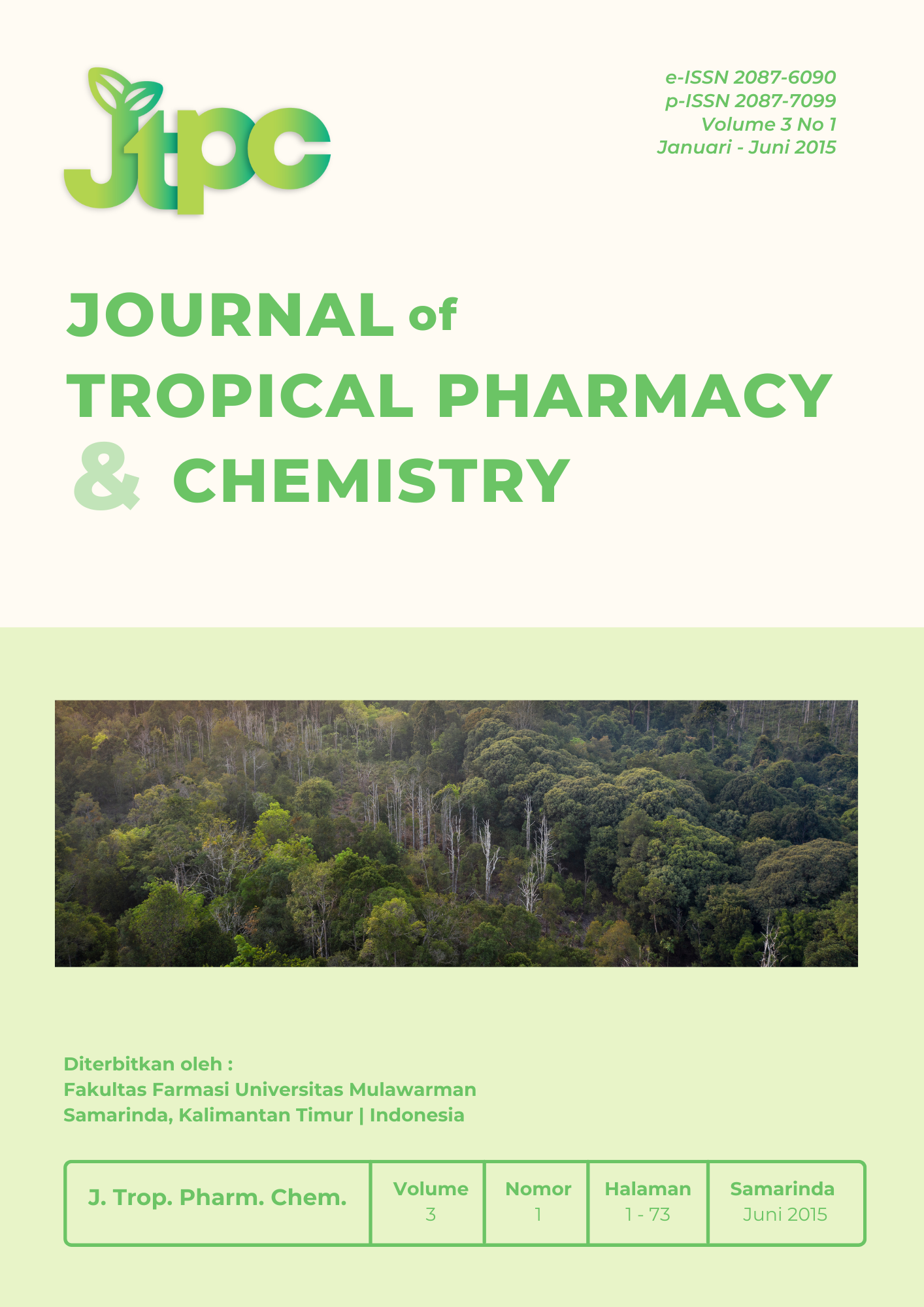SINTESIS 2,6-BIS(2′-HIDROKSIBENZILIDIN)SIKLOHEKSANON DARIHIDROKSIBENZALDEHID DAN SIKLOHEKSANON DENGAN KATALISNATRIUM HIDROKSIDA
Abstract
The synthesis of ciklovalon (HGV-0) analogue was done by substituent modification on aromatic ring. One of the ciklovalon analogues is 2,6-bis(2′-hydroxybenzylidene)cyclohexanone. The objective of this study was obtaining the amount of mol NaOH catalyst in order to find the highest rendement. The synthesis of 2,6-bis(2′-hydroxybenzylidene)cyclohexanone has been done using aldol condentation reaction from 2′-hydroxybenzaldehyde and cyclohexanone. The variation of mol catalyst NaOH used in this research were 0.2 mole; 0.4 mole and 0.8 mole. The synthesized product was purified by recrystalization with ethanol and cold water. The structure of the synthesized compound was determined by UV-Vis, IR, 1H-NMR, and GC-MS. The result showed that the average rendement the variation of mol catalyst NaOH 0.2 mole; 0.4 mol and 0.8 mole were (25.12±0.86)%, (11.23±0.40)% and (9.50±0.56)%. The highest rendement was obtained when the 0.2 mole NaOH used. Statistical analysis using tukey test resulted significant differences. The spectroscopic analysis using UV-Vis, IR spectrometry, 1H-NMR spectrometry, and GC-MS showed that synthesized compound was 2,6-bis(2′-hydroxybenzylidene)cyclohexanone.
Downloads
References
1.Adams, K., Brian, dkk, 2004, Synthesis and biological evaluation of novel curcumin analogs as anti-cancer and anti-angiogenesis agents, Biorganic and Medical Chemestry 12, USA, 3871-3883
2.Anonim, 1995, Farmakope Indonesia, Edisi III, Jakarta: Departemen Kesehatan Republik Indonesia.
3.Carey, A,F., and Sundberg, R.J, 1990, AdvancedOrganic Chemistry, Third edition, part B, Structure and Mechanism, Plenum Press, New York, 55,58-60.
4.Mackenzie, 1967, Experimental Organic Chemistry, third edition, Prentice hall, inc, Englewood cliffc, N.J., 1-3.
5.Majeed, Muh., Badmaev, V., Shivakumar, U., Rajendran, R., 1995, Curcuminoids- Antioxidant Phytonutrients, Nutriscience Publishers Inc., Piscataway, New Jersey.,7-10,15.
6.Sardjiman, 2000, Synthesis of Some New Series of Curucumin Analogues,
Antioxidative, Antiinflammatory, Antibacterial, Activities and Qualitative
Structure Activity Relationship, A Disertation, Departement of Pharmaceutical, Gadjah Mada University, Yogyakarta, hal 625-628.
7.Sastrohamidjodjo, Hardjono, 1985, Kromatografi, Liberty, Yogyakarta., 26-30,41,43.
8.Sastrohamidjodjo, Hardjono, 2001, Spektroskopi, Ed. 2, Liberty, Yogyakarta., 54-56,119,163-165.
9.Van Der Goot, 1995, The Chemistry and Qualitative Structure Activity Relationship of Curcumin, In Pramono S. (editor), Recent Development in Curcumin Pharmacochemistry, p.13, Faculty of Pharmacy Gadjah Mada University, Aditya Media, Yogyakarta.




